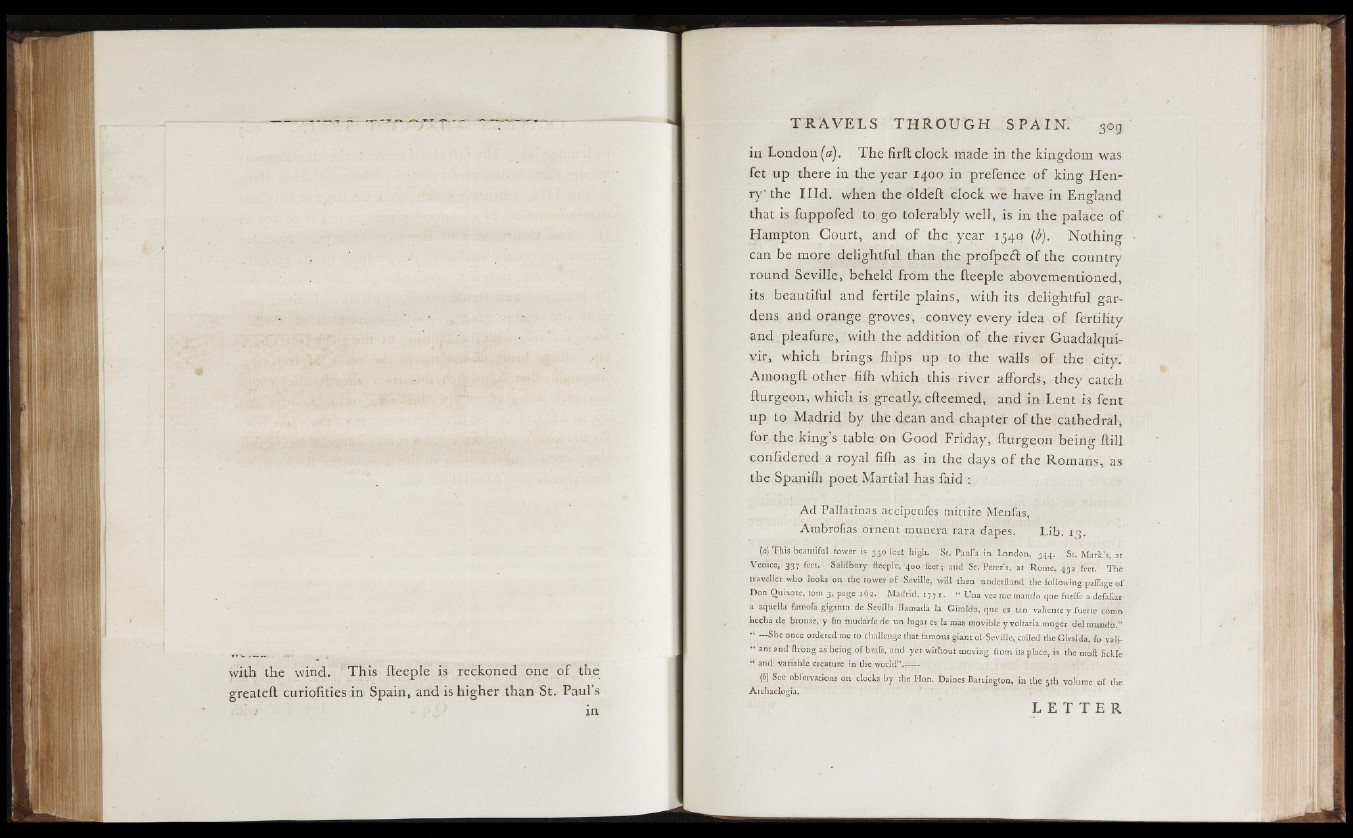
with the wind. This fteeple is reckoned one o f the
greateft curiofities in Spain, and is higher than St. Paul’s
in London (a). The firft clock maide in the kingdom was
fet up there in the year 1400 in prefence o f king Henry'the
I lld . when the oldeft clock we have in England
that is fuppofed to go tolerably well, is in the palace o f
Hampton Court, and o f the year 1540 (b). Nothing
can be more delightful than the profpecft o f the country
round Seville, beheld from the fteeple abovementioned,
its beautiful and fertile plains, with its delightful gardens
and orange groves, convey every idea o f fertility
and pleafure, with the addition o f the river Guadalquivir,
which brings ihips up to the walls of the city.
Amongft other fiih which this river affords, they catch
fturgeon, which is greatly, efteemed, and in Lent is fent
up to Madrid by the dean and chapter of the cathedral,
for the king’s table on Good Friday, fturgeon being ftill
coniidered a royal fiih as in the days o f the Romans, as
the Spanifh poet Martial has faid :
Ad Pallatinas accipenfes mittite Menfas,
Ambroiias ornent munera rara dapes. Lib. 13.
W Th!s beautiful tower » 350 feet high. St.-Paul’s in London, 344, St. Mark’s, at
Venice, 337 feet. Salifbury iteeple, 400 fe e t; and St. Peter’s, at Rome, 432 feet. The
traveller who looks on the tower of Seville, will then underftand the following, paflage o f
Don Quixote, tom 3, page 162. Madrid, 1771. “ Una vezmemando que fueffe a A-fnIf-,.-
a aquella faanofa giganta de Sevilla llamada la Giralda, que es tan vallente y fuerte corner
hecha de bronze,'-y fin mudarfe de un lugar es la mas movible y voltaria muger del mundo."
“ ~ She once ordered me to challenge that famous giant of Seville, called the Giralda, fo vali-
“ ant and ftrohg as being o f brais, and yet without moving from its place, is the moil fickle
“ and variable creature in the world” .----- '
(6) See obfervations on clocks by the Hon. Daines Barrington, in the jth volume of the
Archaelpgia*